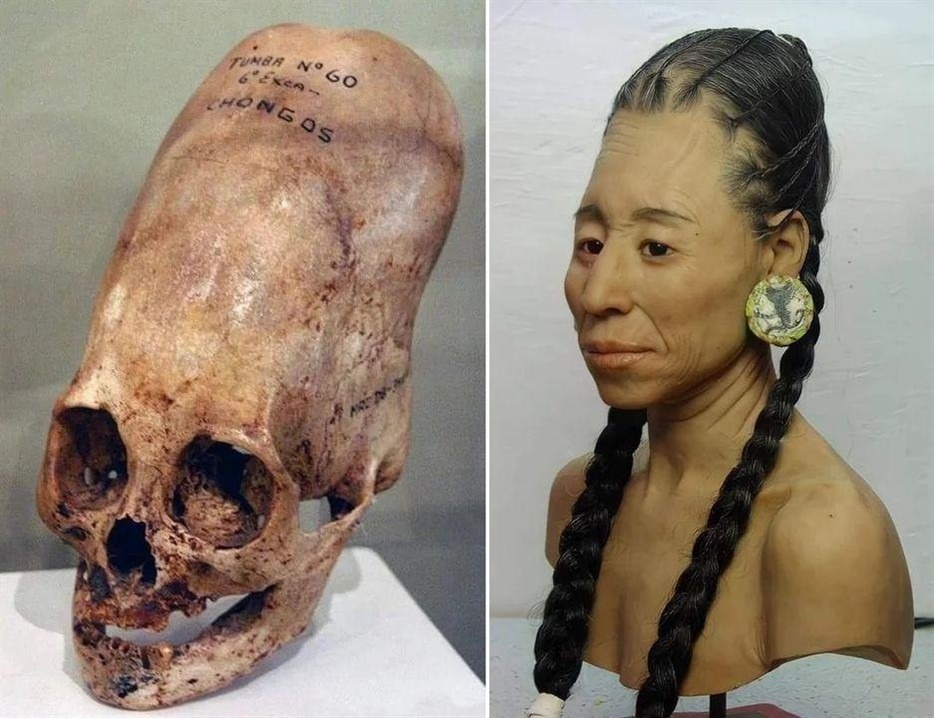The Chongos Skull: Shaped by Culture, Preserved by Time

Archaeological discoveries often illuminate not only the lives of individuals but also the values and beliefs of entire civilizations. One such find is the Chongos skull, discovered in Peru and dating back to the Early Intermediate Period (200 BCE – 600 CE). This haunting relic exemplifies the ancient practice of cranial modification, a deliberate reshaping of the human skull that reveals both cultural identity and social hierarchy. Far from being a mere curiosity, the Chongos skull is a striking example of how the human body itself was transformed into a canvas of meaning.
Cranial Modification in Ancient Peru

Cranial modification was widely practiced among ancient Andean cultures, including the Paracas, Nazca, and Wari. From infancy, wooden boards or cloth bindings were applied to mold the soft bones of the skull into elongated or flattened forms. This process, carefully controlled and culturally sanctioned, was not a sign of deformity but of prestige, identity, and belief.
The Chongos skull reflects one such tradition, with its elongated curve representing ideals of beauty and status. Within her society, the modified skull may have been a marker of noble lineage, religious role, or community affiliation, instantly recognizable to those who shared her world.
A Reconstruction of the Past
Modern reconstructions of the Chongos skull reveal the face of a woman adorned in her cultural finery. Intricately braided hair frames her elongated head, while striking ornaments decorate her ears. These details bring the ancient practice to life, transforming a silent bone into a vibrant portrait of an individual who once walked among her people.
The reconstruction underscores that cranial modification was not intended to erase identity but to enhance it. By shaping the skull, ancient Peruvians expressed their cultural ideals—turning the body itself into a living symbol of belonging and aspiration.
Cultural Significance
Why did societies reshape their heads so dramatically? Scholars suggest multiple explanations:
-
Social Status: Modified skulls may have marked individuals of high rank or noble heritage.
-
Group Identity: Distinct cranial shapes could signify membership in specific communities or families.
-
Spiritual Beliefs: The altered form may have been associated with divine power, beauty, or closeness to the gods.
The Chongos skull, therefore, is more than a physical relic—it is a cultural artifact, a permanent record of values passed from one generation to the next.

Memory Preserved in Bone
Unlike ornaments or textiles that decay with time, cranial modification endures in bone, preserving ancient ambitions long after their societies vanished. The Chongos skull speaks across centuries, a dialogue between mortality and memory etched into the very structure of the human body.
For archaeologists and historians, it offers both scientific data and cultural insight, reminding us that identity has always been shaped—sometimes literally—by the traditions we inherit.
Conclusion
The Chongos skull is a haunting yet beautiful testament to the ingenuity and symbolism of ancient Peru. Its elongated shape embodies not only personal identity but also collective belief, status, and artistry. Through reconstructions, we can glimpse the face of a woman whose life was defined by cultural ideals, her legacy preserved forever in bone. The Chongos skull stands as both artifact and narrative, proof that even in mortality, memory endures.








